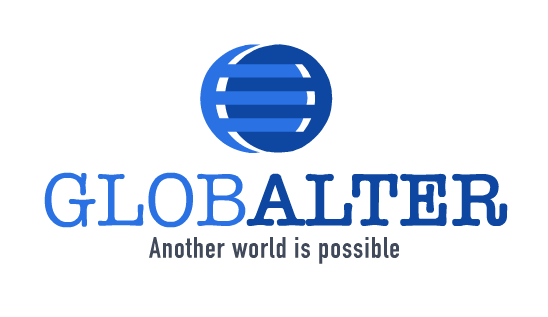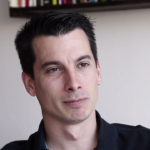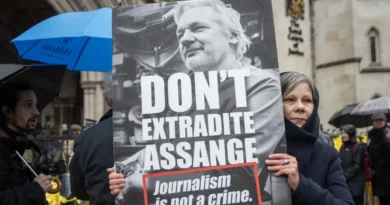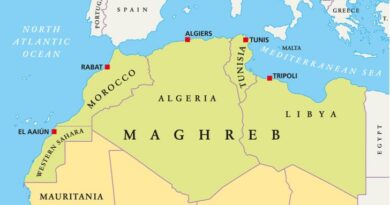NATO breaks its historic promises and expands to Russia's doorstep
JAYRO SANCHEZ
Former US President George HW Bush and the last leader of the Union of Soviet Socialist Republics (USSR), Mikhail Gorbachev, organized their first face-to-face meeting in early December 1989. The meeting was held in one of the cabins of the cruise liner Máxim Gorki, anchored near the port of the Maltese town of Marsaxlokk due to the strong storms that raged the waters of the central Mediterranean during those days.
It was this conference that, according to the joint declaration of both leaders, marked the end of the Cold War (1947-1989). And the one that caused the fall of the last remaining communist regimes in Eastern Europe - with the exception of the Yugoslavian and the Soviet, which would take another year to begin to disintegrate.
In it, Bush Sr. guaranteed his support for Gorbachev's reformist policy, the perestroika, and told him that he did not want to jump "over the Berlin Wall" or harm the USSR.
In principle, the reunification of the Federal Republic of Germany (FRG) and the Democratic Republic of Germany (GDR) should not have posed any obstacles in this regard.
Warranty
On January 31, 1990, the former's Foreign Minister, Hans-Dietrich Genscher, gave a speech about its upcoming launch in the Bavarian town of Tutzing.
A confidential cable sent by the American embassy in Bonn to Secretary of State James Baker mentioned the warnings of the representative of the FRG that the expansion of the North Atlantic Treaty Organization (NATO) towards eastern Europe could cause "a deterioration of the interests of Soviet security.
He also stressed that the minister believed that the inclusion of the territory of the GDR in the Atlantic Alliance "would block the rapprochement between the two Germanys." 11 days later, that idea led to a meeting between FRG Chancellor Helmut Kohl and Gorbachev.
The Soviet leader gave his approval to reunification and the inclusion of the new Germany in NATO as long as it did not advance further towards its own borders. Both he and his Foreign Minister, Eduard Shevardnadze, received assurances that this situation would never occur from Secretary Baker, who claimed to speak on behalf of President Bush.
A "common European home"
On multiple other occasions, the American, French, German and British leadership confirmed such intentions. Not only did they not want the Soviet Union to feel threatened, but they wanted to build a new European security structure alongside it. Or, at least, that was what they expressed.
The president of the USSR thus saw one of his dreams fulfilled: the materialization of the concept of the "common European home." However, he was deceived by those he believed to be his "friends" and "defenders" in the West.
Since he had been elected general secretary of the Communist Party of the Soviet Union (CPSU) in 1985, he had had to swing between the most reformist and the most involutionist elements of Soviet politics while trying to tackle the country's serious and growing economic problems—stopping the arms race it had with the United States and opening its economy, to a certain extent, to the “philosophy” of the free market.
A vodka with neoliberalism
All his efforts were in vain. Following the coup d'état of August 1991 and the moves made by the president of the Russian Soviet Federative Socialist Republic - both inside and outside the USSR - Boris Yeltsin, Gorbachev was forced to dissolve the Soviet State on December 25 of that same year.
Throughout the 1990s, the Russian Federation established itself as the "continuer" of the USSR. Yeltsin was the creator of a new institutional framework that was designed to legitimize his monopoly on power and the abuses of his privatization policies which, as in much of the rest of Eastern Europe at the time, were applied by neoliberal economic "advisors." Americans.
Bush's successor, Democrat Bill Clinton, and his European allies took advantage of Russia's weakness to plan a progressive expansion of NATO towards the east. Like his predecessors, They lied and seduced Yeltsin assuring him that his country would be included in a new European security architecture.
The bear roars again
In 1999, the current Russian president, Vladimir Putin, came to power and, as he himself has stated in a recent interview conducted by far-right former Fox News host Tucker Carlson, has experienced the same treatment regarding his concerns about Russia's inclusion in a new continental "security system."
The West's refusal to integrate it among its partners has facilitated a turn by Moscow towards Asia and, in particular, towards Beijing in recent years. In addition, it has led the Kremlin to demand the creation of a "security space" between the countries that belong to NATO and their borders.
Nonetheless, The Alliance has been gradually establishing itself in Eastern Europe. First, it accepted the accession of the Czech Republic, Poland and Hungary in 1999. A second group consisting of Bulgaria, Romania, Slovakia, Slovenia, Estonia, Latvia and Lithuania joined it in 2004. In 2008, it was Croatia and Albania. In 2020, North Macedonia. The last two States that have joined are Finland, in April of last year, and Sweden, which was accepted five days ago.
An old map that transforms
The governments of these two former "neutral powers", led by the moderate conservatives Ulf Kristersson in Sweden and Petteri Orpo in Finland, decided to begin the procedures to join NATO after the Russian invasion of Ukraine, by which they said they felt threatened.
The Ukrainian question It is one of the key points of tensions between Russia and the West. Putin alleges that the US has tried to intervene in Ukraine's internal politics to distance it from its Russian neighbors, with which it maintains very important economic and historical ties. For its part, Joe Biden's Administration accuses Moscow of acting as if kyiv were its "vassal."
Currently, Ukraine and Finland are the two countries that share the most kilometers of border with Russia in Europe. In 2008, years before the Russian invasion and even the start of the Ukrainian civil conflict in Donbas, the Executive resident in the Mariyínsky Palace had tried to join the Alliance. The leaders who now occupy it continue working on it.
The Orpo and Kristersson Cabinets, which have the parliamentary support of the far-right formations of their respective nations, have placed Putin in a very compromised situation by aligning themselves with NATO. Now, the Russian fleets sailing in the Gulf of Finland and the Baltic Sea are surrounded by the Atlantic coalition. And the Kaliningrad Oblast, located between Poland and Lithuania, has also been surrounded.
Changes in bands
The Kremlin stated on Tuesday that it will take "countermeasures of a political and military-technical nature to minimize threats to its national security," clearly referring to Sweden's admission to the organization.
NATO was created in 1949 with the objective of bringing together all the countries of the so-called "Western bloc" in a common front in charge of defending the global hegemonic position of the United States and the political and economic models - liberal democracy and capitalism - that its leaders advocated against the Soviet "expansionist threat."
Once the Cold War ended and the USSR imploded, its existence lost all the meaning it could have had previously. And, even so, the two Bushes, Clinton and Obama found others: Serbia, the Middle East, the “war on terror”…
The American president, Joe Biden has set two more objectives in his sights. One, Russia, represents the same old antagonist. And the other, China, reveals that NATO is not a group that protects the Atlantic nations from external dangers, but only ensures the maintenance of US interests around the world.













